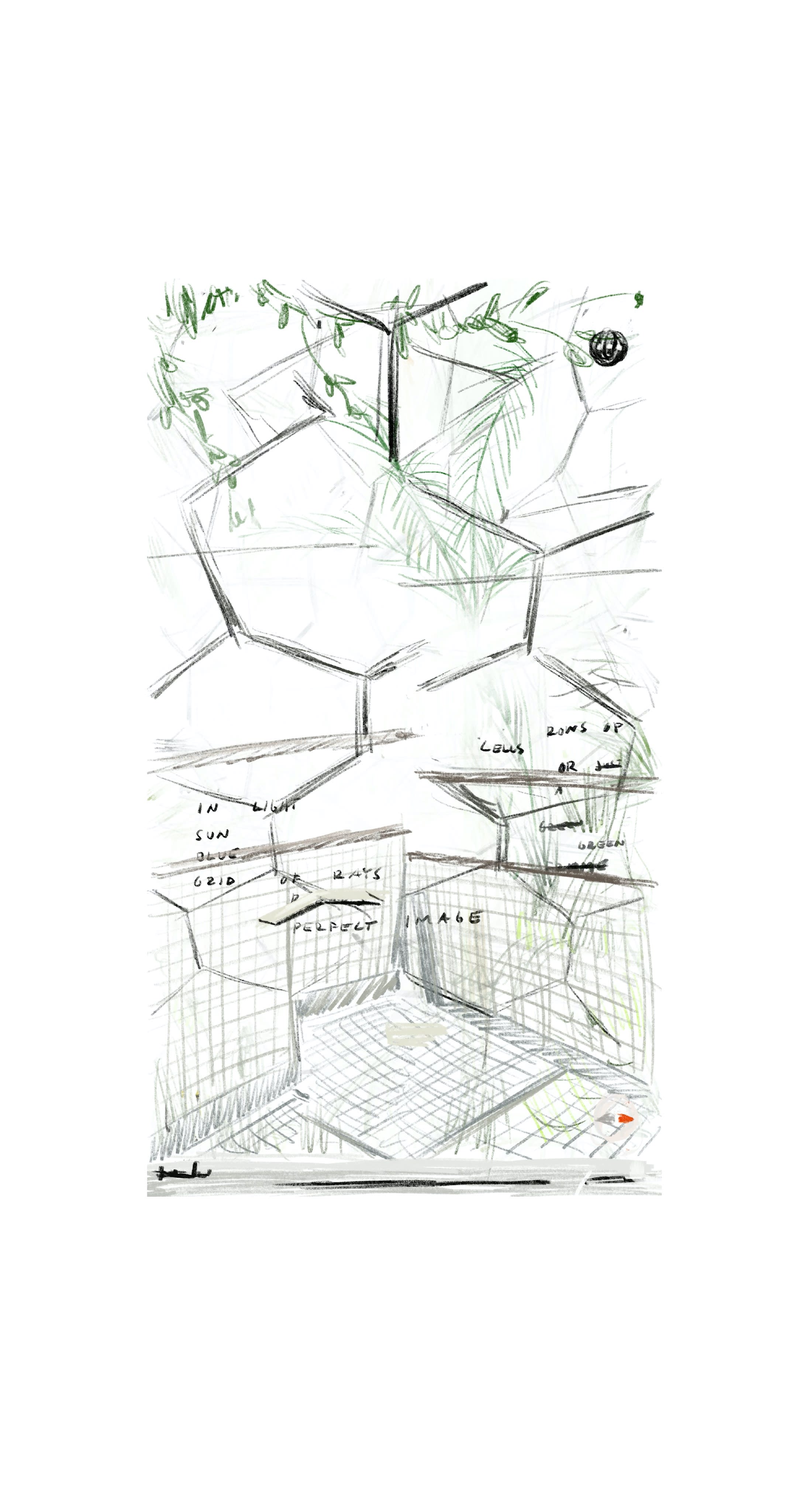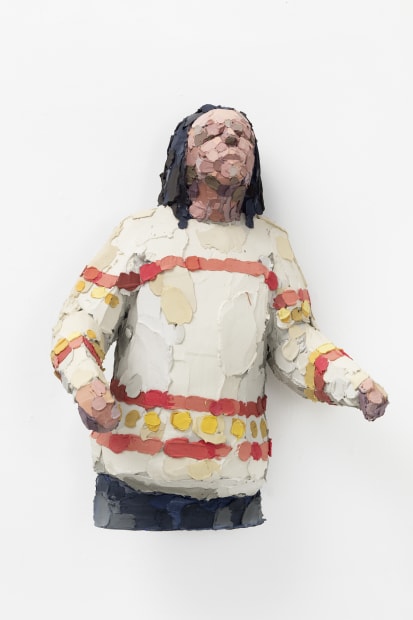-
CREATING MEANING THROUGH FRAGMENTATION
ON THE STORYTELLING CONCEPTS OF VESA-PEKKA RANNIKKO’S ARTAleksandra Oilinki
-

still from the animation Fool's Paradise (2021)
-

From the art works escaping traditional forms to fragmentation fleeing fixed narratives, a theme of escape forms one route to navigate the exhibition. Escaping reality to virtual worlds of online games offers a sort of escape from one’s own identity: a chance to put on a different skin, where a more bodily escape from oneself is attained through trance and ecstasy. The exhibition itself proposes an escape from the white cube presenting the gallery space as a continuation of the animations and the virtual and imagined realities behind them.
Escaping most often entails the promise of a better place. Animation Fool’s Paradise combines visual fragments found on the mysterious paradise on the island of Källskär in Kökar, Åland. A Swedish baron named Göran Åkerfield, referred by the locals as “the Count” built an eclectic combination of Scandinavian and Mediterranean influences, creating his own haven on the Baltic Sea. In the animation, Källskär island as a closed world finds its counterpart of another isolated island in the South Pacific in Tonga. There a stranded group of boys thrived for a whole year in a real-life story of a paradise quite the opposite of the brutal chaos depicted in William Golding’s Lord of the Flies. The illusion of transformation that the sculptures create – a sort of dissolution of an image from three-dimensional to two-dimensional and further into individual brushstrokes – continues in a more fluid flow in the animation. The foot of the bronze statue of Hermes runs and leaks like liquid, growing an ankle in place of its heel, re-emerging soon after as a hand with other forms running through it, shifting and flowing in organic movement. Hummingbirds lead the way as the black-and-red bugs, native to the area, creep their paths on the screen. Words appear, form sentences, and disappear like fleeting thoughts, imperfect and reflective as spoken word. The handwritten texts have spread onto the walls of the gallery, expanding the animation beyond its borders, submerging the viewer deeper into its world.
The sculptures present themselves as artifacts in an imagined, post-apocalyptic, post-humanistic museum, where different visual forms are displayed side by side, hovering or standing on their equally eye-delusory pedestals. In a similar manner with the eclectic collections of home-museums such as the one of the Count of Källskär, where a sort of a democracy of objects prevails, the visual backgrounds of the sculptures are also considered equal. As if a future archaeologist had gone through our imagery and compiled and sculpted them to an exhibition. The lush greenery in the animation Eden entails a reference to the illustrations painted by botanists of the past accompanying explorers on their colonialist travels to wild exotic paradises. The time-consuming and dangerous voyage takes on a different form in the 21st century, with the pandemic restricting access to faraway tropics. Rannikko too followed in the footsteps of an explorer from a less distant past, a visitor that roamed the gardens of the Eden Project in Cornwall, UK, and documented his voyage with his camera phone to the platform of Google Earth. The animation acts as documentation of a documentation, a virtual antithesis of plein air painting documenting a man-made environment to mimic nature.
The sketch-like character of the lines and the texts describing the surroundings imply to an act of taking notes, and the fact that the pen strokes happen as we witness them, suggest that we share a temporal existence with the author, in the present moment. Virtual travels are always also travels in time: the imagined natural paradise beneath the domes of the Eden Project freezes an idea of a paradise of its time, and the photos added to Google Earth form yet another layer. The timeline of the exhibition is likewise fragmented with references to future through the post-apocalyptic dystopia imagined in the computer game Fortnite, to ancient past as a paradise lost via the bronze statuette of Hemaphroditus, and eventually to the paradox of all imagined paradises: ideas of future that become part of the past the moment they are presented. The staged and preserved quality of the residence of the Count at Källskär island, biblical visualizations of paradise as well as the fictive proposals of sci-fi can’t escape the frames of the time of their creation. In our present, on the lower part of the gallery walls, the grey beam familiar from touchscreens implies to imagine the space as a screen, a continuation of the animation’s virtual exploration almost suggesting to action – to swipe and to click. -

Vesa-Pekka Rannikko, Grace, 2020
-

Vesa-Pekka Rannikko, Pollination (Firecrown and Cabbage tree), 2021
-
Vesa-Pekka Rannikko, Fool's Garden, 2021 (EXCERPT)
animated drawing, single channel 4K/ video in vertical monitor2 min 24 s on an endless loop
€ 12,000 -

Vesa-Pekka Rannikko, Trance, 2021
-

Vesa-Pekka Rannikko, (Skin) Bushranger, 2021
-
Vesa-Pekka Rannikko, Eden, 2021 (EXCERPT)
single channel 4K/HD video in vertical monitor
2 min 24 s on an endless loop
€ 8.000 -

Vesa-Pekka Rannikko, Parrot Sitting on Womans Shoulder, 2020
-

Vesa-Pekka Rannikko, Linkola, 2021
-








